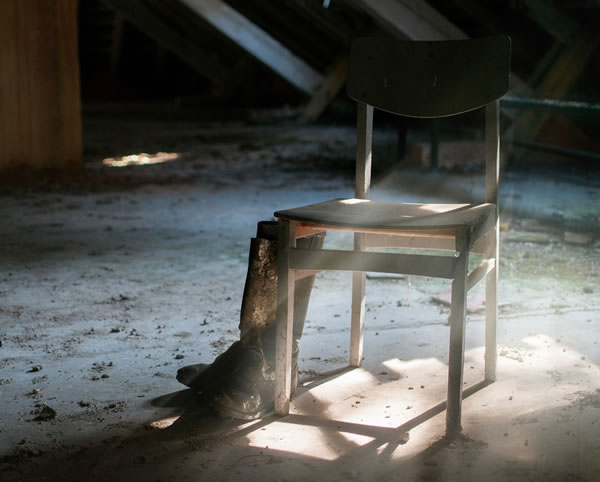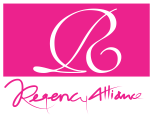Corporate Products
Aviation
Risks associated with air travel has increased forcing aviation authorities all over the world to demand compulsory insurance covers for players. Individuals and corporate organizations can no longer afford to expose themselves to aviation risks without adequate protection. We provide coverage for owners of airfield, aircraft or aircraft hangars, who operate expensive or dangerous equipment. As a market leader, our policies are tailored to our client’s specific needs. Some of the risks we cover include:
– Airfield Owners and Operator’s Insurance
– Hull and Liability Insurance
– Hull War and Allied Perils Insurance
– Hull Spares Insurance

Bond
This type of cover is an agreement between principal (employer) and insurer, the insurer agrees to mitigate any losses he might encounter in the event of the contractor not being able to execute a contract.
Types of Bond Covers Available
Advance Payment Bond: In order to assist contractors perform their contracts promptly, principals grant fund of a specified proportion of the contract value as mobilization or advance payment. The aim is to ensure that the contractor has the funds to execute the project. If however the contractor fails and the fund is not well utilized, the contractor would be held liable to the principal in which case the bond will be called up and the insurance company would have to take up the liability.
Performance Bond: This is issued in favour of the employer to cover any losses he might encounter in the event of the contractor not being able to execute the contract to completion.
Bid/Tender Bond: Is given to the principal to ensure that if the contract is awarded and the contractor could not take up the project, the cost of re-tendering the contract will be borne by the company [insurer].
Customs Bond: This is security to the Customs & Excise authorities to the effect that dutiable goods in bounded warehouse will not get into local market with the attendant loss of income to Customs & Excise.

Goods in Transit
The policy covers the goods insured whilst in transit from a designated point by road, rail, waterways or air until delivery at the point named as destination. The cover could be any of the following two;
All Risks Cover: Provides an all risks cover for the insured goods against loss or damage from any accident or misfortune to goods in transit by any vehicle owned or hired by the insured. Covers include loading and unloading risks, whilst temporarily housed in ordinary course of transit within Nigeria.
Restricted Cover: it covers the loss or damage to the goods resulting from fire, theft and accidental collision or overturning of conveying vehicle.

These are cars used for private and domestic purposes. They could either be a Saloon car, Wagon or Jeep.
COMMERCIAL VEHICLE
These are vehicles use by the insured for his business purpose. They could fall under the following categories;
Own Goods: Vehicles used by the insured for his private business only and the carriage of goods belonging to the insured and his business.
General Cartage: These are vehicles used solely by the insured for the running of his business and for commercial activities like carriage of goods for reward.
Fare paying/non-faring passenger vehicle: These are vehicles used in carrying passengers from one destination to another either for the payment of fare or none. Luxurious buses, taxis fall under these categories.
MOTOR CYCLE
This must be motorcycle used in the running of the insured business like dispatch rider or vendor of goods. Passenger carrying cycle is excluded.
TYPES OF COVER
There are four different types of cover available under motor policy, these are:
Comprehensive Cover
It provides cover for the insured vehicle against the following:
- Accidental damage to the vehicle
- Loss of or damage to the insured vehicle by fire or theft
- Malicious damage to the vehicle
- Insured’s legal liability to third parties in respect of any damages to the property of such third parties and for any injury or death to the third parties arising from the use of the motor vehicle

Money Insurance
The policy covers loss of money comprising currency, bank notes, coins, money orders, current postage stamp belonging to the insured or for which he is responsible. The cover is of various classes as named below.
Cash in Transit: It covers loss of money belonging to the insured or for which he is responsible during the course of transit between specified places i.e. from insured premises to the bank vise versa.
Cash in Safe: It covers loss of money belonging to the insured or for which he is responsible whilst kept in a locked safe.
Damage to Safe: Cover could also be extended to cover damage to the safe. It covers the cost of repairing safes damaged in the course of committing a burglary.
Money in personal custody of staff: It covers loss of money in personal custody of senior members of the management or persons whose duties relate to purchase.

Employer’s Liability
Employers’ liability insurance is one of the main types of business insurance, and most employers are legally obliged to take out a policy. It can pay compensation costs and legal fees if an employee or ex-employee sues for illness or injury caused by their work.

Plant All Risk
This type of insurance cover is available for either of the following organization or individual
– Plant-hire contractors (Hire – Out)
– Building contractors (Hire – In)
– Other contractors who owned and hire some plants during constructions
SCOPE OF COVER
This cover is against unforeseen and sudden physical loss or damage to the insured plant from such cases as:
– Fire and lightning.
– Theft and burglary.
– Falling impact, collision and the likes.
– Lack of skill, carelessness or malice of persons whether in the insured’s employment or not.
– Faulty materials, design construction or erection, vibration, maladjustment and misalignment.
– Defective lubrication, loosening of parts abnormal stress, molecular fatigue self – heating, centrifugal force.
– Excessive electrical pressure whether due to atmospheric electricity or otherwise.
– Failure of connected machinery or protective device.
– Storm tempest, obstruction or the entry of foreign bodies.
The policy normally provides an annual cover and is renewable on annual basis. The policy remains in force whether the insured plants are at work or at rest. Being dismantled for purpose of cleaning or overhauling.

Industrial All Risks
Industrial All Risks (IAR) is a comprehensive insurance policy that incorporates Fire, Fire Loss of Profit, Theft and Accidental damage covers. It is subdivided it two sections and it covers all risks not excluded by the policy.
Section A of the policy covers material damage to insured assets e.g. Buildings, Stocks, Plant and Machinery, Office contents, furniture and fittings etc…
Section B of the policy covers loss of profits or income caused by interruption of the business by a material damage loss under section A provided the material damage loss is admissible under the policy. Cover is provided under headings; Gross profit, Wages, Auditors fees & Increased cost of workings.
The policy is suitable for large establishments and once taken, there will be no need of taking out Fire and Fire Consequential Loss Policies as well as Burglary.

Marine Insurance
Marine Insurance can be classified into two:
1. MARINE CARGO INSURANCE: This policy covers insured goods (cargo) while in transit from one destination to another. There are two main types of cover under this type of policy. They are:
Clause ‘A’ [All Risks Cover]: This covers every conceivable risk of loss or damage to which goods may be exposed during transit. This expression ‘All Risks’ does not cover every form of loss or damage to which the cargo may be subjected. The exclusions include among other things loss, damage or expense proximately caused by delay or inherent vice or nature of the goods insured.
Clause ‘C’: Partial loss of insured goods is not covered in the policy, claims are payable when there is total loss of insured goods. This could be as a result of the vessel or craft been stranded, sunk or burnt on the voyage. In all cases of business-transacted certificate of insurance shall be issued to the insured on payment of premium.
2. MARINE HULL INSURANCE: It provides cover for the marine vessel for a period of time as agreed. The value of the vessel being the sum insured, cover can also be provided for Protection & Indemnity [P & I] and Pollution Liability.
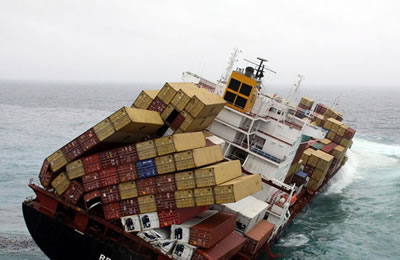
Oil and Energy
The Oil & Energy department of Regency Alliance Insurance Plc is staffed with experienced professionals trained to underwrite Oil and Energy Insurance. Our capacity is growing rapidly enabling us to transact high ticket transactions.
Our Oil and Energy products are available to a diverse range of customers of all sizes, including onshore and offshore operations, with a focus on exploration and production.
We offer coverage to:
– Operators
– Drilling contractors
– Workovers
– Well loggers
– Oil field electricians
– Geophysical services
– Service contractors
– Equipment rental
– Pipeline contractors
Some of the covers available are:
– Offshore Construction All Risks Insurance
– Onshore construction All Risks Insurance
– Operator’s Extra Expenses [including Control of Well]
– Liability Cover
– Package policy could be arranged to suit the Proposal’s need

Contractor All Risk
Liabilities arising from project execution, work processes and professional practice could be devastating. Contractor’s All Risks Insurance provides cover for loss of or physical damage to property.
This is an ‘All Risks’ policy. It covers the insured against loss of or physical damage to the insured property and occurring during the period of insurance. Covers can be provided for the followings based on the insured preference.
– The contract work
– Temporary building at site
– Plant & Machinery at site
– Liability to third party [members of the public] which is optional
– Offsite storage
– Transit risk
– Professional fee
– Debris removal
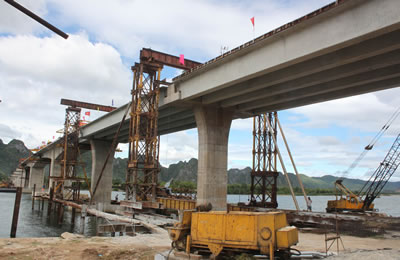
Director’s Liability
Directors’ liability insurance covers the cost of compensation claims made against a company directors and key managers (officers) for alleged wrongful acts. Wrongful acts include:
- breach of trust
- breach of duty
- Neglect error
- misleading statements
- wrongful trading
Benefits of the policy
Directors’ liability insurance can cover the cost of compensation claims made against directors or key managers by shareholders, investors, employees, regulators or third parties.
Directors and officers have specific duties, responsibilities and powers relating to their positions. These are usually set out in their job description or terms of reference. If a director or officer of your company is found to have acted outside of their terms of reference, civil, criminal or regulatory proceedings can be brought against them.
Directors’ and officers’ liability insurance, covers the cost of defending these proceedings, as well as any compensation costs that arise from an unsuccessful defence. If directors and officers do not have insurance, they face a greater risk of not being able to defend themselves against:
- disqualification from holding the position of director
- civil proceedings which can lead to hefty legal costs and awards for damages
- criminal prosecution which can lead to fines and possible imprisonment
What is not covered
Directors’ and officers’ liability does not cover claims made against your organisation as a whole, only those made against individuals for alleged wrongful acts carried out in their capacity as directors or officers.

Fidelity Guarantee
The policy is designed to protect the insured against loss of cash or property he might suffer through dishonesty or fraudulent acts of his employees. Such loss must be discovered within six months after theft, dismissal, retirement of such employee or six months after the expiration of such policy whichever first occurs.
There are four types of policies. They are:
- Individual:Guarantees a named individual
- Collective:Guarantees a number of named individuals with different amount of guarantee against each name.
- Floating:Guarantees a number of named individuals for a fixed amount for all with an inner limit.
- Blanket:Guarantees on the entire members of staff for a fixed sum over-all with an inner limit. This is another form of floating policy.
Forms used include the following amongst others:
1. Applicant’s form
2. Referee’s forms/Previous Employers form
3. Employers form
4. Counter Indemnity forms in some cases

Professional Indemnity
For professionals such as accountants, architects, doctors, insurance brokers and others, liability may be incurred due to negligence or due to care not being exercised either by them or their employees in the course of their professional practice.
The policy is therefore designed to cover such professionals against their liability to their clients, third parties or members of the public as a result of negligence by them and their predecessors in business.

Public Liability
The policy provides cover for all sums for which the insured shall be legally liable to pay to third party or members of the public in respect of bodily injury including death or illness and damage to their property in connection with the insured’s business.
The policy in addition to the above also covers claimant’s cost and other legal costs incurred with the written consent of Underwriters. The risk can either emanate from these two sources.
Work-Away-Risks: These relate to legal liabilities of the insured outside the premises caused by employees in connection with the insured’s business i.e. road construction work, dredging or erection of billboard etc.
Premises Risks: These are risks usually associated with the legal liabilities of the insured as occupier(s) of the insured premises. The insured owes visitors who are legally on the premises a duty of care, and any breach of this duty imposed on him by common law lays him open to liability.

Erection All Risks
Erection All Risk Insurance is specially designed to cover loss or damage to projects during the erection and installation of plant and machinery, including testing/commissioning. This policy protects a contractor or employer against physical loss or damage to the contract works and also enables them to comply with the insurance requirements of the Contract.
There is a seeming similarity between the Contractors All Risk (CAR) and the Erection All Risk (EAR) but it is worthy of note that they are not similar. While the CAR provides cover for civil works and mostly buildings needed to house or support expensive machinery & equipment, the EAR covers the erection.
Our EAR insurance policy offers protection to contractors, sub-contractors, manufacturers and suppliers from unforeseeable damage in the course of erection and installation works.
Extension
Accidental loss or damage to third party property and/or bodily injury arising in connection with the erection work.
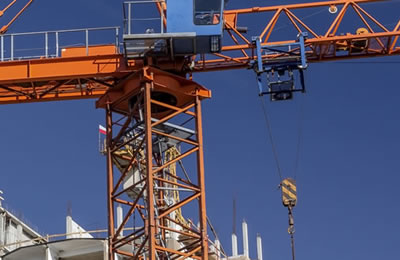
Machinery Breakdown
The policy covers unforeseen and sudden damage to the insured plant and machineries from such causes as:-
- Faulty design, construction or erection, vibration, maladjustment, misalignment,
- Defective lubrication, loosening of parts, abnormal stress, molecular fatigue, self-help centrifugal force.
- Excessive electrical pressure whether due to atmospheric electricity or otherwise
- Shortage of water in boilers, physical explosion tearing apart on account of centrifugal force
- Failure of insulation, short circuit open circuit and arcing
- Failure of connected machinery or protective devices
- Falling, impact, collision etc
The main thrust of this cover is mainly electrical and mechanical breakdown and accident damage to plants and machineries from extraneous causes.
The cover affords protection to the insured machinery whilst at work or at rest and also when they are being dismantled for the purpose of cleaning, inspection and overhauling or removal to another position or in the course of their operations or subsequent re‐erection, provided these are performed in the same premises.

Business Interruption
Business Interruption Insurance covers the temporary loss of income that a business suffers after a disaster leads to its operations being shut down. It is linked to a property insurance policy and is sometimes called Consequential Loss Insurance. The additional coverage allotted by the business interruption policy covers the income that would have been earned, as the intention is to put a business in the same financial position it would have been if the loss had not occur.
Business Interruption Insurance is not normally sold as a stand-alone policy, but will be added on to the property insurance policy or comprehensive package policy. Since Business Interruption is included as part of the primary policy, it only pays out if the cause of the loss also falls as a material damage claim.
The coverage extends until the end of the business interruption period, which is determined by you, the customer. Most policies define this period as starting on the date of the disaster and lasts until the damaged property is physically repaired and returned to operations under the same conditions that existed prior to the disaster.
Policy features can include:
- Profits – Profits that would have been earned
- Fixed costs – Operating expenses and other costs still being incurred
- Temporary relocation – Covers the extra expenses for moving to, and operating from, a temporary location
- Extra expenses – Reimbursement for reasonable expenses that allow the business to continue operation
- Additional expenses – Accountants fees & cleaning costs
- Cover for loss or damage to account records so unable to recover customer debts
- Damage to suppliers premises making your business unable to trade
- Denial of access to your premises
